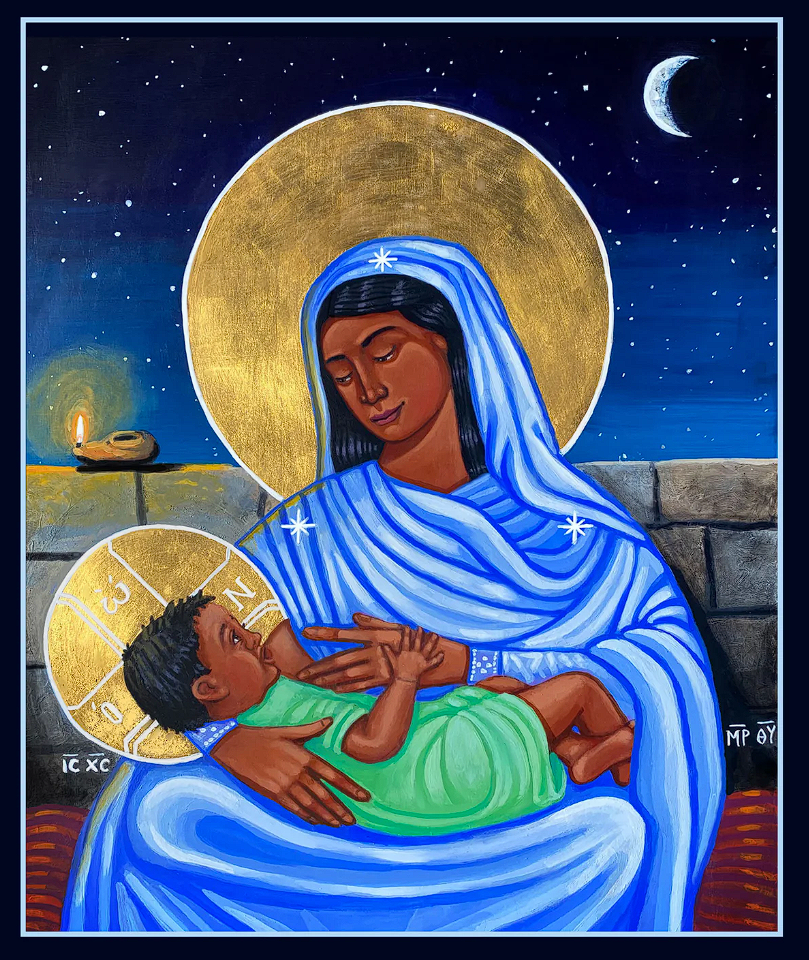On Christmas Eve more than three decades ago, I read Isaiah 9:2-7 as a lector at our parish’s late service.
I was heavily pregnant with our first child — he was born three weeks later — and personally and liturgically anticipating the break of a “new and glorious morn.” The prophet’s words landed differently:
And he is named
Wonderful Counselor, Mighty God,
Everlasting Father, Prince of Peace.
His authority shall grow continually,
and there shall be endless peace
for the throne of David and his kingdom.
He will establish and uphold it
with justice and with righteousness
from this time onward and forevermore. (Isaiah 9:6b-7a NRSV)
Parents have hopes for their children and fretfully anticipate their accomplishments. For my child, I wished for good health and security, joy, fulfillment and flourishing, a richly loving community who would make the hard days better and the good days their best. But Isaiah’s particular prediction feels kind of next-level.
We know enough about Jesus’ mother to admire her and little enough to be drawn toward her mystery — the precarity of a pregnant teenager, unmarried, displaced and in danger, entrusted with birthing and then raising the Messiah.
We hear Mary of the Magnificat, a self-described lowly servant issuing a transgressive proclamation that her God would deal mercifully with the vulnerable while harshly toppling the proud and powerful. She is, in this song, fierce mother protector, preaching until she believes in a better world to come.
We know Mary beside the manger as Luke describes her, maintaining her composure amid the cacophony created by a heavenly host of angels and a group of agitated shepherds who have dropped by for a look-see. His description of her as she considered all the signs and signifiers of her newborn’s proclaimed majesty could translate as serenity — she “treasured up all these things and pondered them in her heart” (Luke 2:19 NIV). But this quiet reflection could also be interpreted as exhaustion and worry — a feeling shared by many dark-skinned women who continually birth a promise in the hope that, this time, it won’t be taken from them and destroyed.
We feel for Mary when preteen Jesus slips away for three days in the temple and then sassily flips her concern back on her.
We mourn with Mary at the cross.
But the stories I have wondered about and yearned for are from those precious unrecorded moments of this human woman mothering a human child who is also God. The moments where no prophecy was to be fulfilled or horrific sacrifice to be witnessed. I wonder about the moments of nurture and tender tending.
What was it like to be a mama to a son who lived in some form of danger much of his life? The world would not be kind to him, even as he cared for its people, after she first had cared for him. I imagine moments when Mary was simply Jesus’ mother, seeing her child’s love reflected back to her, a tiny person ensnared neither by history nor by destiny.
Among the most recent offerings from the iconographer Kelly Latimore is his image “Mary Breastfeeding Baby Jesus.” From Mary’s rich blue robes, tinged with purple, to the dark skin she and the infant Christ share, every part of the icon is intentional, Latimore told me during a conversation in November, incorporating his research and discernment leading to its creation.
“For the early church, breastfeeding Mary was this really important symbol and metaphor for God’s love for humanity,” Latimore said.
Though the image fell out of favor after it came to be considered inappropriate centuries ago, Latimore said he has had many requests to paint such an icon in recent years.
“I think it’s so beautiful, and something that’s such an important relationship in the vulnerability of God becoming human in the personhood of Jesus,” he said. “Then, as a young baby — this mother literally having to take care of this vulnerable being with her body. In terms of the symbol of incarnation, it is just such a beautiful and important thing that for all manner of reasons got tucked away in a lot of our Advent and Christmas narratives or images.”
A parent wants a child’s well-being, both through the proximity of care and nurture and within a world attuned to thriving. What we know of Mary’s story through biblical narratives touches on both but shares little on the actual mothering that she provided her son.
The fierceness of her Magnificat and the anxiety of her mangerside pondering become even more resonant alongside depictions of Mary’s incarnate humanity. And Latimore’s icon reinforces that even when the world offers no safe space, babies need to eat and caring adults need to tend to them. Such things are necessary for humanity to survive.
Mary’s son was sent to people who violently rejected him, but as the very human mother of God made flesh, her care for him rooted in a parent’s love is a reminder of responsibility for the vulnerable and a fervent hope for the future.














